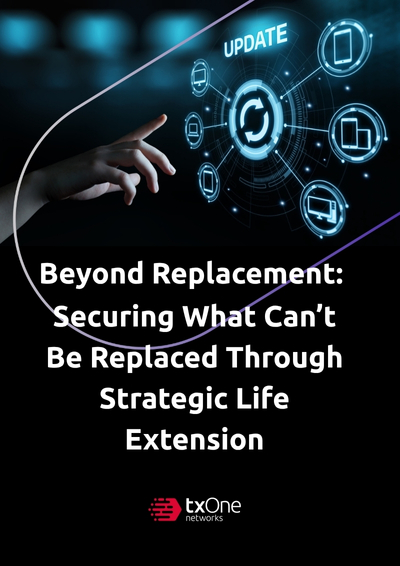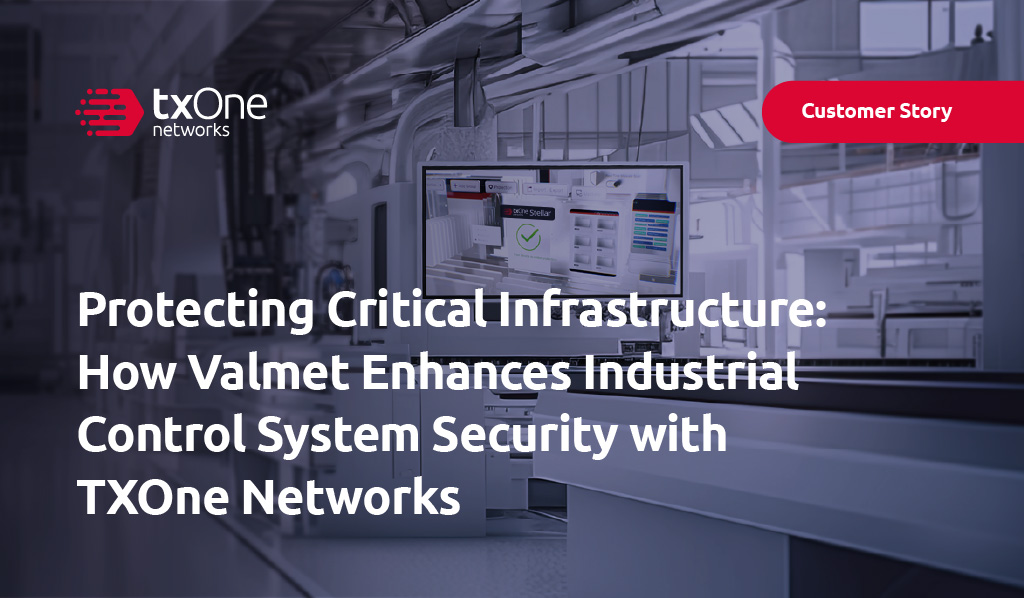Introduction
Within Operational Technology (OT) environments, legacy Windows systems remain a critical part of the infrastructure, presenting unique security challenges. For the purposes of this article, legacy Windows systems refer to those systems no longer receiving updates, patches, or direct support from the developer during their product lifecycle. Despite advancements in technology and the availability of newer, more secure operating systems, many factory managers continue to rely on these outdated systems, such as Windows XP. This reliance stems from operational and financial considerations and also introduces significant cybersecurity risks. This article explores why legacy Windows systems are still prevalent in OT environments, the challenges they present, and strategies for mitigating future cyber risks.
The Prevalence of Legacy Windows Systems in OT
OT encompasses hardware and software designed to monitor and control physical devices, processes, and events within enterprises. In many industrial settings, OT systems are built to last, their lifespans often exceeding ten years. As a result, numerous OT assets continue to operate on legacy Windows systems, including Windows XP, which was released over 20 years ago. Why do factory managers hesitate to modernize these assets? Aren’t they aware of the cybersecurity risks? Of course they are, but in reality, factory managers face a complex decision-making process with cybersecurity risks being only one of many factors they must address. The interplay of cost, compatibility, and vendor support issues creates substantial barriers to the modernization of OT systems:
- Cost and Operational Continuity: One of the primary reasons factory managers hesitate to replace legacy OT systems is cost. Upgrading OT infrastructure not only involves the expense of new hardware and software but also the potential downtime, which can disrupt production and lead to significant financial losses. Legacy systems are often deeply integrated into the manufacturing process, making replacement complex and costly.
- Compatibility Issues: Many legacy OT systems are custom-built for specific tasks and designed to operate on particular hardware and software configurations. Upgrading to newer systems may require substantial modifications to both hardware and software. This raises concerns about whether the new systems can maintain the high yield, productivity, and stability of the existing setup.
- Lack of Vendor Support: In some cases, the vendors that supplied the original OT systems are no longer in business or have ceased supporting these systems. This lack of vendor support makes upgrading difficult, as the necessary technical expertise and replacement parts may not be available. Additionally, some OT systems are proprietary and cannot be directly migrated to a new platform, requiring vendors to redevelop and integrate these systems. This redevelopment demands significant time and resources.
Cybersecurity Challenges with Legacy Systems
Legacy systems, particularly those running on obsolete platforms like Windows XP, pose significant vulnerabilities that can be exploited by cyber attackers. This section delves into the key cybersecurity challenges associated with legacy systems, highlighting the absence of antivirus support, inherent vulnerabilities due to outdated design, and the risks only increasing as these systems become more interconnected with modern IT networks.
- Lack of Antivirus Support: One of the critical cybersecurity challenges with legacy systems, particularly those running Windows XP, is the lack of support from modern antivirus solutions. Many cybersecurity firms have ceased providing updates and support for antivirus software on Windows XP. Additionally, some end users will incur higher maintenance costs in their efforts to protect these legacy systems or pay costly fees to cybersecurity firms to maintain essential antivirus functionalities. At times, they are compelled to manage multiple endpoint protection solutions to ensure effective security, which undoubtedly complicates the security management of OT.
- Inherent Vulnerabilities: Legacy systems like Windows XP were designed at a time when cyber threats were far less sophisticated. As a result, these systems naturally lack many of the security features and patches that are standard in modern operating systems. Consequently, they are more susceptible to attacks such as ransomware, malware, and other exploits.
- Network Exposure: As OT systems become increasingly connected to corporate IT networks and the internet, the attack surface expands. Legacy systems, that are often left without the latest security patches and updates, can serve as entry points for cyber attackers, jeopardizing the entire network.
How TXOne Prepares Legacy Systems for Increased Cyber Resilience
Many manufacturing and healthcare organizations find it prohibitively challenging to immediately phase out legacy systems. In situations where these systems are crucial for operations, TXOne Networks offers a next-generation Cyber-Physical Systems (CPS) endpoint protection solution for critical OT assets. TXOne leverages Cyber-Physical Systems Detection and Response (CPSDR) to prevent any unintended system changes from impacting operations. It is the first solution to provide seamless protection and comprehensive oversight for both legacy and new OT assets running concurrently.
- Industrial-Grade Next-Generation Antivirus Software: TXOne Stellar includes support for malware scanning of network drives and removable media. By integrating this capability, all data accessed or transferred through network drives and removable media is meticulously scanned for malware, enhancing overall security and mitigating the risk of infection.
- Operational Behavior Anomaly Detection: TXOne Stellar uses advanced algorithms and analytics to identify any abnormal behavior within system operations. It detects deviations from expected patterns or behaviors in real-time, providing protection against fileless malware attacks.
- Application Lockdown: This cutting-edge feature ensures that only authorized operations and executions can take place, effectively preventing any unauthorized activities within the system. It ensures operational integrity, reduces downtime, and lowers recovery costs, which is particularly valuable for “unpatchable” systems.
- Trusted Peripheral Control: TXOne Stellar’s USB Vector Control feature blocks the use of unauthorized external storage media. It can also allow a select few external storage devices based on device identification parameters such as Vendor ID, Product ID, or Serial Number, thereby preventing unauthorized access.
Other Recommendations for Addressing Future Cyber Risks:
- Micro-Segmentation: One effective strategy to protect legacy systems is network segmentation. By isolating OT networks from corporate IT networks, organizations can limit the potential impact of a security breach. Implementing firewalls and access controls can further enhance this segmentation.
- Virtual Patching: For systems that cannot be upgraded, virtual patching offers a way to mitigate vulnerabilities. This approach involves using EdgeIPS to monitor and block malicious activity in real-time, effectively “patching” vulnerabilities without modifying the actual system.
- Comprehensive Monitoring: Continuous monitoring of OT environments is crucial. Implementing TXOne SageOne can help detect unusual activity and potential threats early, enabling a swift response.
- Regular Audits and Assessments: Conducting regular security audits and inspections can help identify vulnerabilities and areas for improvement. Our Element solutions proactive approach ensures that even legacy systems are maintained with the highest possible security standards.
Conclusion
The persistence of legacy Windows systems in OT environments presents significant cybersecurity challenges. Manufacturers often retain these systems due to cost, compatibility, and support issues, but this decision carries substantial risks. The lack of modern antivirus support and the inherent vulnerabilities of outdated systems make them prime targets for cyberattacks. However, by implementing next-generation CPS endpoint protection solution, Stellar, for critical OT assets, organizations can mitigate these risks and enhance their overall security posture.
If it is not possible to install any third-party software on critical assets, consider our alternative recommendations such as network micro-segmentation, virtual patching, comprehensive monitoring, and regular security inspections. The transition to more secure, modern systems is a long-term goal, but in the interim, these measures can help protect critical OT assets from evolving cyber threats.
Would You Like to Learn More?
TXOne Stellar is committed for log-term support of legacy operating systems without extra technical support fees in addition. Send us your contact information and we will be in touch shortly for more details.





